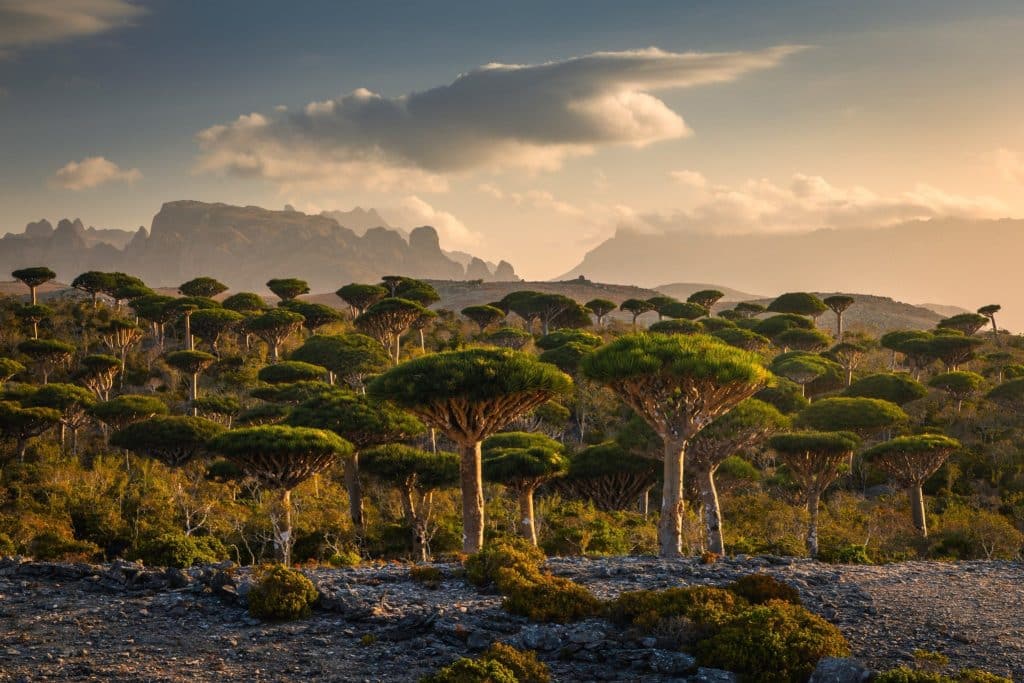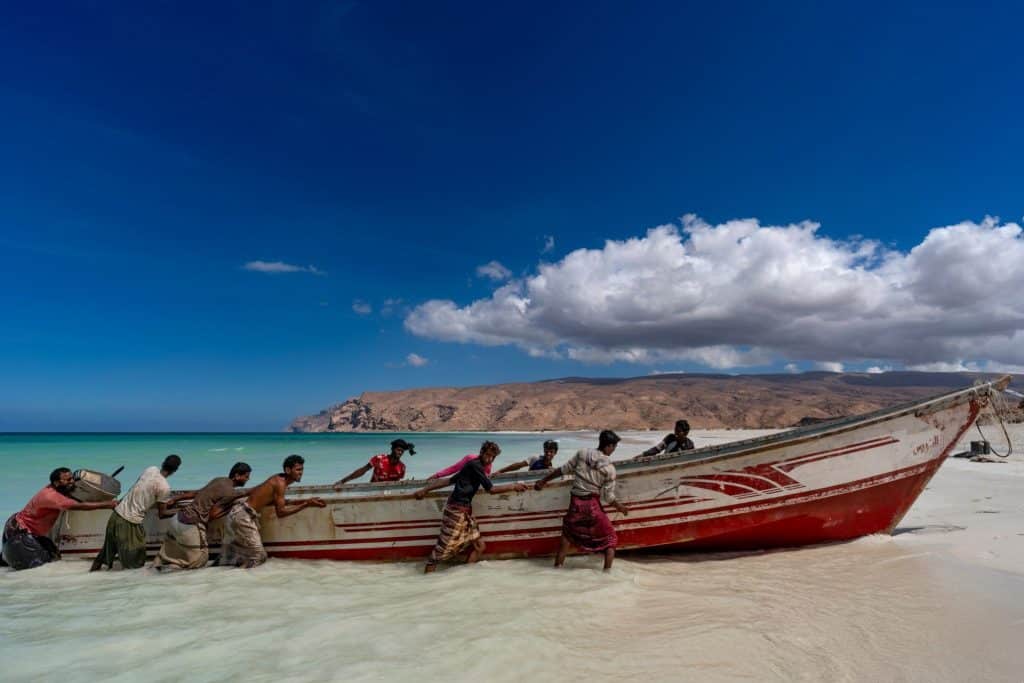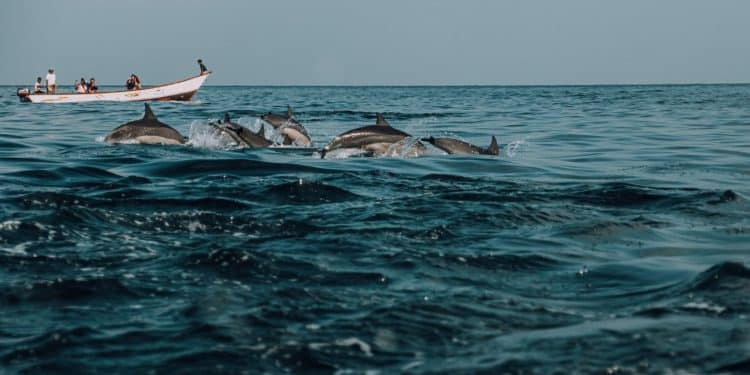If you’ve ever searched for a destination that feels like another planet, a Socotra travel guide will show you exactly where to look. Located in the Arabian Sea, Socotra is part of Yemen but sits isolated enough to create its own ecosystem. The result? Alien-looking dragon blood trees, pristine white beaches with no footprints, and caves that echo with silence.
For travelers who want both raw adventure and solitude, Socotra is unmatched. This guide will cover everything you need to know about planning your trip, from how to get there, what to expect, and why its untouched landscapes might just redefine your idea of paradise.
Why Socotra Feels Like Another World
The first thing you notice when stepping off the plane is the air—dry, salty, and heavy with the scent of desert plants. A proper Socotra travel guide cannot skip the dragon blood tree. Its umbrella-shaped canopy looks straight out of a fantasy novel. These trees only grow here, and locals still use their red sap for medicine and dye. Paired with chalky limestone cliffs and turquoise seas, the island offers scenery you won’t find in a dozen other destinations combined.
Unlike other tropical getaways, Socotra’s charm lies in its lack of development. There are no five-star hotels, no chain restaurants, and barely any internet. It’s a place that reminds you of how Earth looked before mass tourism.
How to Get There
Reaching Socotra requires planning. Flights usually operate from Cairo or Abu Dhabi, with limited schedules. A Socotra travel guide should warn you that these flights book out fast, often months in advance. Once you land, there’s only one airport: Socotra Airport near the capital, Hadibo.
Transportation on the island is mainly by 4×4 vehicles, often organized through local tour operators. Public transport does not exist. Most visitors arrange packages that include accommodation in basic eco-camps, meals, and guided tours.
Best Time to Visit
The climate dictates when to plan your trip. Socotra experiences two monsoon seasons when seas are too rough for travel. The ideal months are between October and April. A Socotra travel guide will tell you that during these months, the weather is warm, dry, and perfect for trekking, swimming, and exploring caves.

The Landscapes You Can’t Miss
Dragon Blood Trees on the Dixam Plateau
The Dixam Plateau is home to the largest concentration of dragon blood trees. Their bizarre shapes rising from rocky ground make it the most photographed spot on the island. A Socotra travel guide almost always starts here because it captures the island’s otherworldly essence in one panoramic view.
Qalansiya and Detwah Lagoon
Qalansiya is a small fishing village with some of the island’s friendliest people. Just nearby is Detwah Lagoon, a turquoise stretch where sandbars appear and disappear with the tides. A walk along its shores feels like a stroll through a painting.
Shuab Beach
Accessible by boat from Qalansiya, Shuab Beach is the kind of place that makes you wonder how it has stayed hidden. White sands meet calm blue waters, and dolphins often swim close to the boats. Any Socotra travel guide worth its name lists it as a must-see.
Hoq Cave
Stretching several kilometers into the limestone mountains, Hoq Cave is filled with stalactites, stalagmites, and even ancient inscriptions. Bring a headlamp, because once inside, you’ll be plunged into silence and shadow.
Wildlife Found Nowhere Else
One third of Socotra’s plant species exist nowhere else on Earth. Beyond dragon blood trees, you’ll see desert roses with swollen trunks and cucumber trees with odd balloon-like shapes. A Socotra travel guide also highlights the birdlife—species like the Socotra starling and Socotra sunbird are endemic. Even the reptiles are unique, with over 90% of them found only here.
For marine lovers, snorkeling around the island reveals coral reefs, parrotfish, and rays in waters far less crowded than the Red Sea.
Where to Stay
Don’t expect luxury resorts. Accommodation options are simple: eco-camps, tents, and small guesthouses in Hadibo. That’s part of the island’s appeal. A Socotra travel guide often points out that staying here reconnects you with basics—fresh fish dinners, nights under the stars, and morning hikes without crowds.
Food and Local Hospitality
Meals are simple but flavorful. Freshly caught fish, rice, flatbreads, and goat dishes are staples. Tea flows freely, often sweetened with condensed milk. Locals are welcoming, and it’s common to be invited into homes. A Socotra ravel guide reminds travelers to accept with gratitude, as hospitality is deeply rooted in island culture.
Travel Costs and Budget Tips
Socotra is not a budget backpacker destination, but costs are reasonable when compared to mainstream island getaways. A week-long trip package usually covers guides, drivers, food, and accommodation. If you’re planning carefully, you’ll want to check resources like On a Budget for strategies to stretch your funds.
Flights are the biggest expense, so booking early saves money. Once there, daily spending is low because there are no shops, bars, or nightlife to tempt your wallet.
Essential Travel Hacks for Socotra
- Bring cash in USD, as there are no functioning ATMs.
- Carry a power bank and solar charger, since electricity is unreliable.
- Pack snorkeling gear; rentals are scarce.
- A Socotra travel guide should warn you that SIM cards often don’t work—download offline maps and music before arriving.
For more practical tricks that go beyond this island, check Travel Hacks.

Socotra for Digital Nomads
If your lifestyle revolves around remote work, Socotra may not be practical. Internet access is nearly non-existent. But for digital nomads who can disconnect for a while, the island provides the perfect creative reset. Writing under dragon trees or sketching by the lagoon can refresh your focus like nowhere else. Curious nomads can dive into Digital Nomad tips for balancing travel with work.
An Epic Destination Unlike Any Other
It’s no exaggeration to say Socotra ranks among the most surreal places you’ll ever visit. Its empty beaches, dramatic cliffs, and unique flora make it a jewel in the Indian Ocean. For explorers seeking once-in-a-lifetime journeys, this is it. That’s why it belongs firmly in the Epic Destinations category of any serious traveler’s list.
Packing for the Island
A Socotra travel guide always emphasizes smart packing. Essentials include:
- Lightweight clothes for hot days
- A jacket for cooler nights on the plateau
- Sturdy hiking boots
- Reef-safe sunscreen
- Reusable water bottle
- Basic first aid kit
Remember, there are no convenience stores to buy forgotten items, so preparation is key.
Respecting Local Culture
Socotra is conservative, and respecting traditions goes a long way. Dress modestly, especially in villages. Always ask before photographing people. A Socotra travel guide should stress that interactions here are about mutual respect rather than transactions.
Why Visit Socotra Now
Mass tourism hasn’t yet reached Socotra. That means visiting now lets you experience its wild beauty before big resorts and cruise ships arrive. A Socotra travel guide encourages travelers to tread lightly, supporting local operators and leaving no trace.
A Traveler’s Perspective
Standing on Shuab Beach, watching dolphins arc through the water, you realize what makes Socotra unforgettable. It’s not just the dragon trees or caves; it’s the feeling of being in a place untouched by time.
For travelers chasing true discovery, Socotra is a destination that offers both raw adventure and inner stillness.

Why Socotra Stays With You
Travel often fades into photos and memories, but Socotra leaves a deeper mark. Its alien landscapes challenge how you see the planet. Its silence stays with you long after you’ve returned to the chaos of city life.
A Socotra travel guide is more than just logistics—it’s a promise that some corners of Earth remain wild, waiting for those willing to reach them. If you’re planning your next big trip, start exploring the Viral Voyage main site for ideas, then let this Socotra travel guide be your compass.


